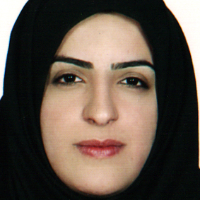Migration and Atomization: A Qualitative Study among Immigrant Women in Yazd City
In recent decades, there have been significant developments in immigration often referred to as the age of immigration. These developments highlight the increasing participation of women in the migration process and the rise of independent female migrants, a phenomenon known as the feminization of migration (Khaje Nouri & Sharifi, 2022). Research indicates notable changes in both quantitative and qualitative aspects of women's migration. In terms of quantity, women now constitute nearly half of all immigrants. Moreover, in terms of quality, women are no longer solely dependent immigrants; they now play a crucial and influential role in migration flows (Sadeghi & Valadvand, 2015). According to the latest statistics released by the United Nations, as of 2020, the proportion of immigrant women stands at 3.5% of the global population, while the proportion of immigrant men is 3.7% of the world's male population (21). In Iran, the representation of women in migration has increased from 45% during the period of 1986-1996 to 48.6% during the period of 2011-2016. Additionally, based on immigration and net immigration data from 2011-2016, Yazd Province is among the top four provinces in Iran that attract immigrants and is considered an appealing destination for both genders (Mushfiq & Khazaei, 2015). Despite the changing migration patterns in the country and the increasing number of women migrating in the past decade, there has been limited research conducted in this field. Furthermore, there is a scarcity of qualitative studies examining the migration experiences of women. Given that Yazd is recognized as one of the most immigrant-friendly provinces in Iran and a desirable destination for female immigrants, this research aimed to analyze the migration process of women from their origin to their destination. The primary objective of this study was to address questions like how women make decisions to migrate and settle in their destination, as well as what challenges and consequences they encounter in the host society and how they navigate through them.
The current research employed a qualitative methodology to investigate the process of women's involvement in migration flows. Given the research objective, the most suitable method for studying this process was grounded theory, utilizing a systematic approach developed by Strauss and Corbin (2008). The participants for this study were selected through purposeful sampling followed by theoretical sampling. The selection of participants aimed to ensure diversity in terms of age, marital status, literacy level, occupation, type of migration (independent or dependent), reasons for migration, and the provinces of origin. To ensure reliable data and gain a comprehensive understanding of the research dimensions, interviews were conducted until data saturation was achieved, meaning that no new information or themes emerged from the interviews. The primary data collection tool employed in this research was a semi-structured interview. Between August and November 2022, the interviews were conducted with 21 women, who had immigrated to Yazd from various provinces in the country. These women had resided in Yazd for a minimum of two years and possessed the aforementioned characteristics.
The findings indicated the initial stages of the atomization process experienced by the migrant women. This process was driven by their self-determination and was closely linked to their struggles in their places of origin. It manifested in various dimensions, including a continuous increase in suffering, a challenging life in their hometowns, and a breakdown of trust due to destabilizing conditions in their places of origin. Faced with these difficult circumstances, the migrant women had experienced a sense of detachment from their places of origin. In their quest to rebuild their lives and find personal fulfillment, they had actively sought to redefine their social networks in relation to their destination of migration. However, upon arrival at their destination, they had encountered challenges, such as a lack of cultural acceptance, economic limitations, and an isolating urban lifestyle. Consequently, they had been compelled to engage in transactional communication as a means of survival. The outcome of this process was the formation of a circle of defined, mutually beneficial, and secure social relationships. These relationships had been continuously shaped, expanded, or restricted based on the fluid conditions they had encountered.
- حق عضویت دریافتی صرف حمایت از نشریات عضو و نگهداری، تکمیل و توسعه مگیران میشود.
- پرداخت حق اشتراک و دانلود مقالات اجازه بازنشر آن در سایر رسانههای چاپی و دیجیتال را به کاربر نمیدهد.



